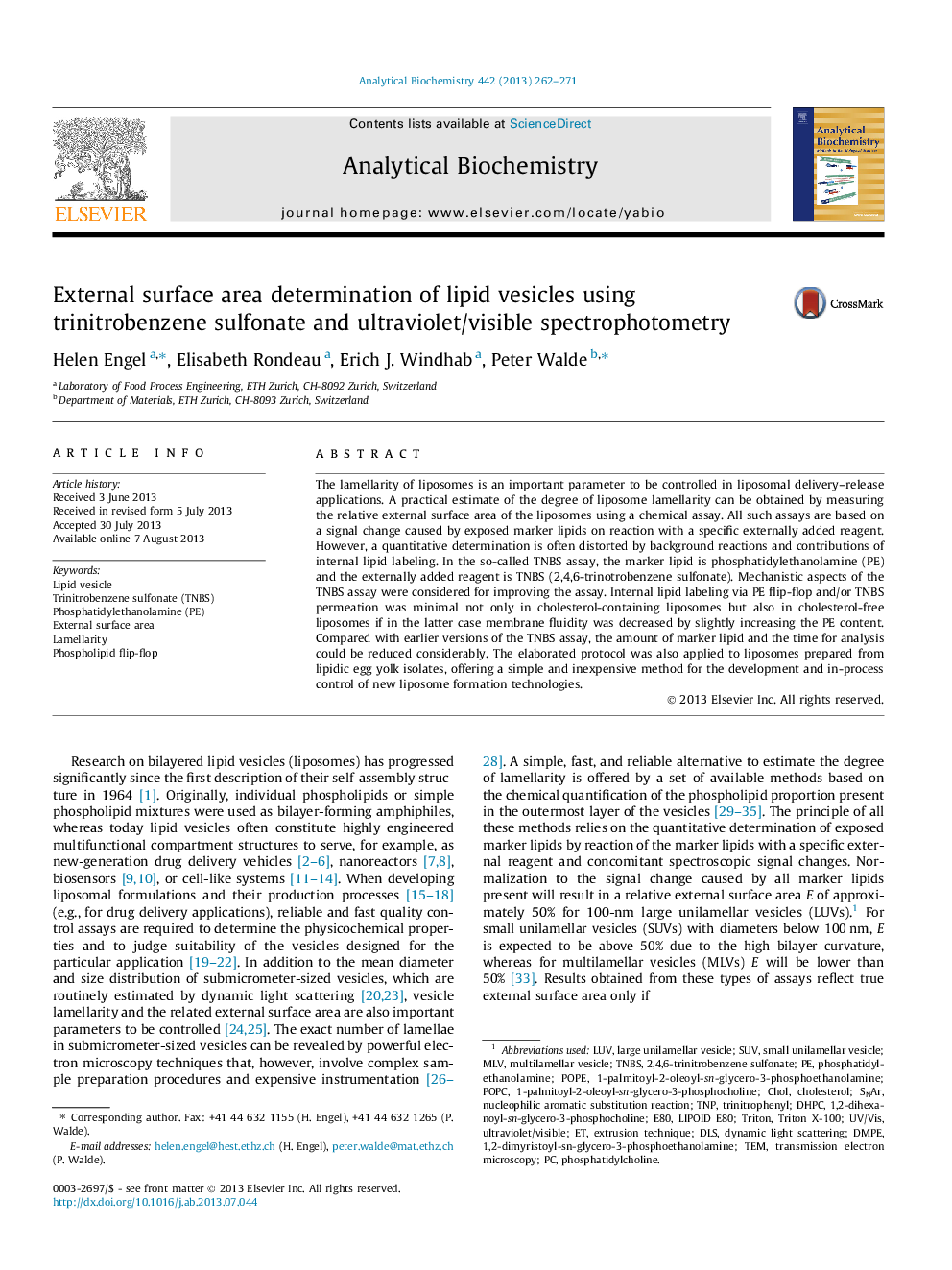| کد مقاله | کد نشریه | سال انتشار | مقاله انگلیسی | نسخه تمام متن |
|---|---|---|---|---|
| 1173681 | 961694 | 2013 | 10 صفحه PDF | دانلود رایگان |

The lamellarity of liposomes is an important parameter to be controlled in liposomal delivery–release applications. A practical estimate of the degree of liposome lamellarity can be obtained by measuring the relative external surface area of the liposomes using a chemical assay. All such assays are based on a signal change caused by exposed marker lipids on reaction with a specific externally added reagent. However, a quantitative determination is often distorted by background reactions and contributions of internal lipid labeling. In the so-called TNBS assay, the marker lipid is phosphatidylethanolamine (PE) and the externally added reagent is TNBS (2,4,6-trinotrobenzene sulfonate). Mechanistic aspects of the TNBS assay were considered for improving the assay. Internal lipid labeling via PE flip-flop and/or TNBS permeation was minimal not only in cholesterol-containing liposomes but also in cholesterol-free liposomes if in the latter case membrane fluidity was decreased by slightly increasing the PE content. Compared with earlier versions of the TNBS assay, the amount of marker lipid and the time for analysis could be reduced considerably. The elaborated protocol was also applied to liposomes prepared from lipidic egg yolk isolates, offering a simple and inexpensive method for the development and in-process control of new liposome formation technologies.
Journal: Analytical Biochemistry - Volume 442, Issue 2, 15 November 2013, Pages 262–271